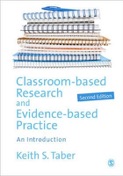Educational Research Methods

A site to support teaching and learning...

Personal construct theory: person-as-scientist
George Kelly used a metaphor to explain his Personal Construct Theory. Personal construct theory is based on the notion of constructive alternativism, that is an example of a theoretical perspective on the way people make sense of their experiences/worlds”
Man-the-scientist
“This fellow called the scientist pinpoints the issues, they said, he observes, he becomes intimate with the problem, he forms hypotheses inductively and deductively, he makes test runs, he relates his data to predictions, he controls his experiments so that he knows what leads to what, he generalises cautiously, and he revises his thinking in the light of experimental outcomes. These are the operations that explain the behaviour of a scientist. All of this is very interesting, particularly because it represents a particularly coherent theory of personality, albeit one that is reserved for scientists only. …our model of man is that of man-the-scientist and our questions will revolve about the issue of whether man can be understood in this manner, both in the floodlight of history and in the dark of his closet.” (Kelly 1958/1969: 62-63).
Kelly, G. (1958/1969). Clinical Psychology and Personality: The selected papers of George Kelly. In B. Maher (Ed.), Clinical Psychology and Personality: The selected papers of George Kelly (pp. 46-65). New York: John Wiley & Sons.
...but not always an ideal scientist!
“If we think of man as we think of a scientist - though we need not always think of him as good scientists - what shall we say happens to his matrix, his theoretical system, when he gets negative results from his experiments ... “He may refuse to accept the verdicts given by his data and ignore them, distort his perception of them, or manipulate them in such a way that they will appear to confirm his hypothesis.” (Kelly, 1961/1969: 110-111)
Kelly, G. (1961/1969). A mathematical approach to psychology. In B. Maher (Ed.), Clinical Psychology and Personality: The selected papers of George Kelly (pp. 94-113). New York: John Wiley & Sons.
This has certainly influenced research into children’s alternative conceptions of science:
In 1982, Gilbert (UK), Fensham (Australia) and Osborne (NZ) published their influential paper considering ‘children’s science’, and the various possible outcomes when the children concerned were subject to formal instruction in the topics where they already had established ideas:
-
•a ‘unified scientific outcome’, where the learned meanings closely matched that intended (pp.630-1).
-
•a two perspectives outcome, where the pre-existing conceptions and the newly learnt material would co-exist (p.624).
-
•children’s science largely undisturbed by ‘teaching’ (Pope & Gilbert, 1983: 201).
-
•a reinforced outcome where the material presented is (mis)understood to support the learner’s existing ideas.
-
•partial learning of ideas, as only so much new material could be learnt at one time, so that ideas would not be fully integrated in cognitive structure, and could be contradictory.
Gilbert, J. K., Osborne, R. J., & Fensham, P. J. (1982). Children’s science and its consequences for teaching. Science Education, 66(4), 623-633.
This is a personal site of Keith S. Taber to support teaching of educational research methods.
(Dr Keith Taber is Professor of Science Education at the University of Cambridge.)
2016
